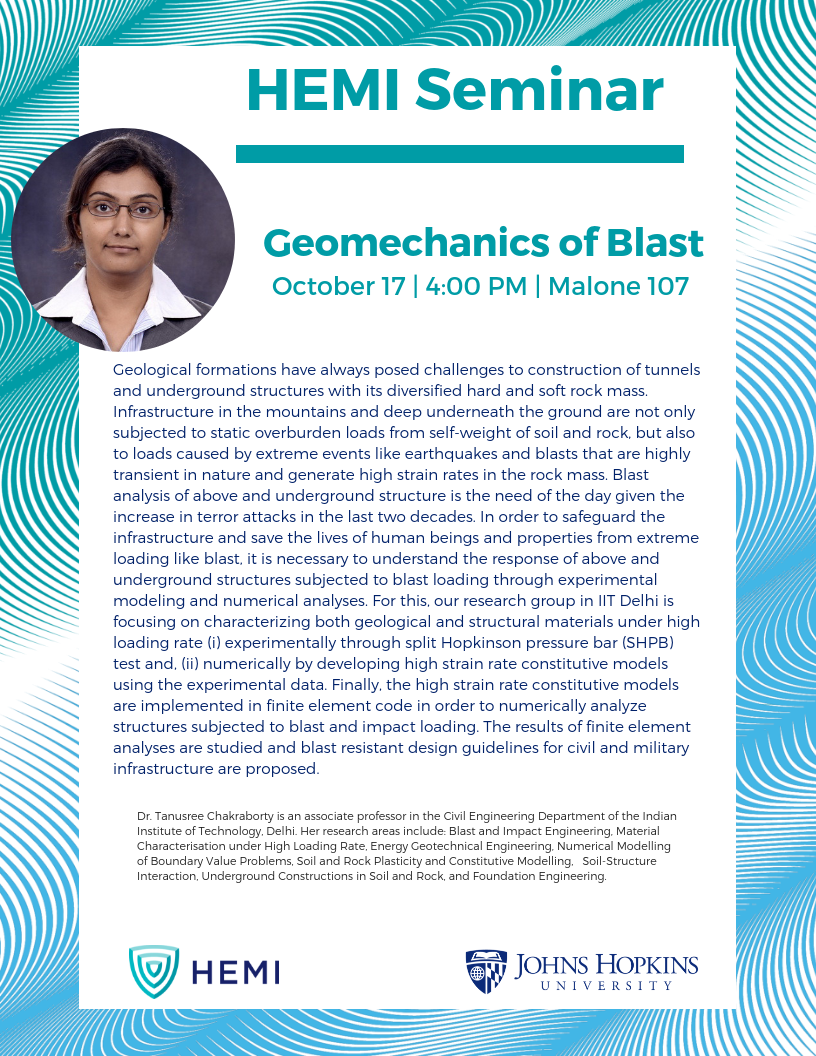October 17, 2018 @ 4:00 pm - 6:00 pm
Geological formations have always posed challenges to construction of tunnels and underground structures with its diversified hard and soft rock mass. Infrastructure in the mountains and deep underneath the ground are not only subjected to static overburden loads from self-weight of soil and rock, but also to loads caused by extreme events like earthquakes and blasts that are highly transient in nature and generate high strain rates in the rock mass. Blast analysis of above and underground structure is the need of the day given the increase in terror attacks in the last two decades. In order to safeguard the infrastructure and save the lives of human beings and properties from extreme loading like blast, it is necessary to understand the response of above and underground structures subjected to blast loading through experimental modeling and numerical analyses. For this, our research group in IIT Delhi is focusing on characterizing both geological and structural materials under high loading rate (i) experimentally through split Hopkinson pressure bar (SHPB) test and, (ii) numerically by developing high strain rate constitutive models using the experimental data. Finally, the high strain rate constitutive models are implemented in finite element code in order to numerically analyze structures subjected to blast and impact loading. The results of finite element analyses are studied and blast resistant design guidelines for civil and military infrastructure are proposed.
Dr. Tanusree Chakraborty is an associate professor in the Civil Engineering Department of the Indian Institute of Technology, Delhi. Her research areas include: Blast and Impact Engineering, Material Characterisation under High Loading Rate, Energy Geotechnical Engineering, Numerical Modelling of Boundary Value Problems, Soil and Rock Plasticity and Constitutive Modelling, Soil-Structure Interaction, Underground Constructions in Soil and Rock, and Foundation Engineering.





